Best slide indoors or in the garden | Complete guide with top 13 & tips

Always something to do for the holidays or rainy day?
Play Choice now has the ultimate activity book collection, with over 60 pages of fun coloring pages and educational puzzles.
Kids love it slides! They often find it exciting to climb up the stairs and then quickly slide down.
But are you looking for your own slide to keep them going, then you'll soon find out that you slides have many different models!
I have looked them all up for you and extensively reviewed the best models here.
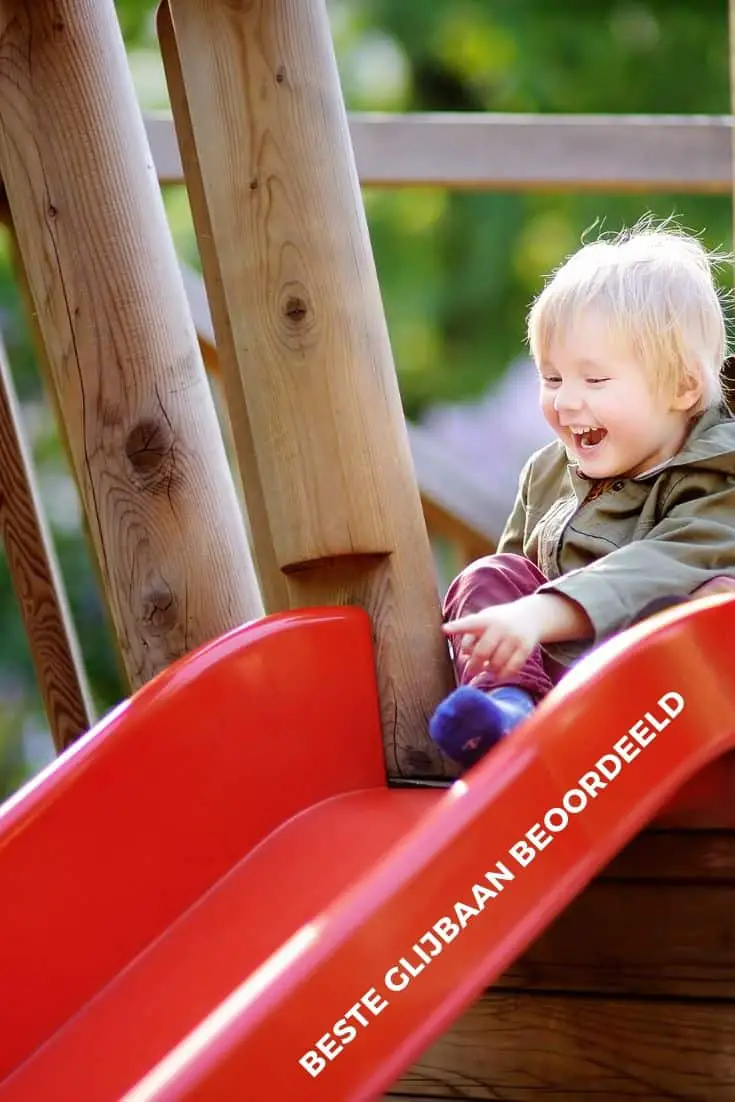
For example, you can purchase one for indoors (for example for a toddler or a toddler) or of course just one for in the Outdoor.
In this article I will go through all the possible choices with a number of handy buying tips.
If you are just starting out, you have a toddler and you want one that is safe and small slide, then I would this Step2 Ball Fun Climber recommend.
What a fun brand Step2 is, with lots of plastic toys that are safe to play with indoors and out, and this climber is great as a first slide.
But there are of course many more, also for older children.
Which is suitable largely depends on the age of your child, and to make the choice a bit easier, I have already done some research for you.
In the table below you will find my favorite ones slides classified into various categories.
| Slides | Images |
| The Best slide for toddler: Step2 Play ball fun climber playset | 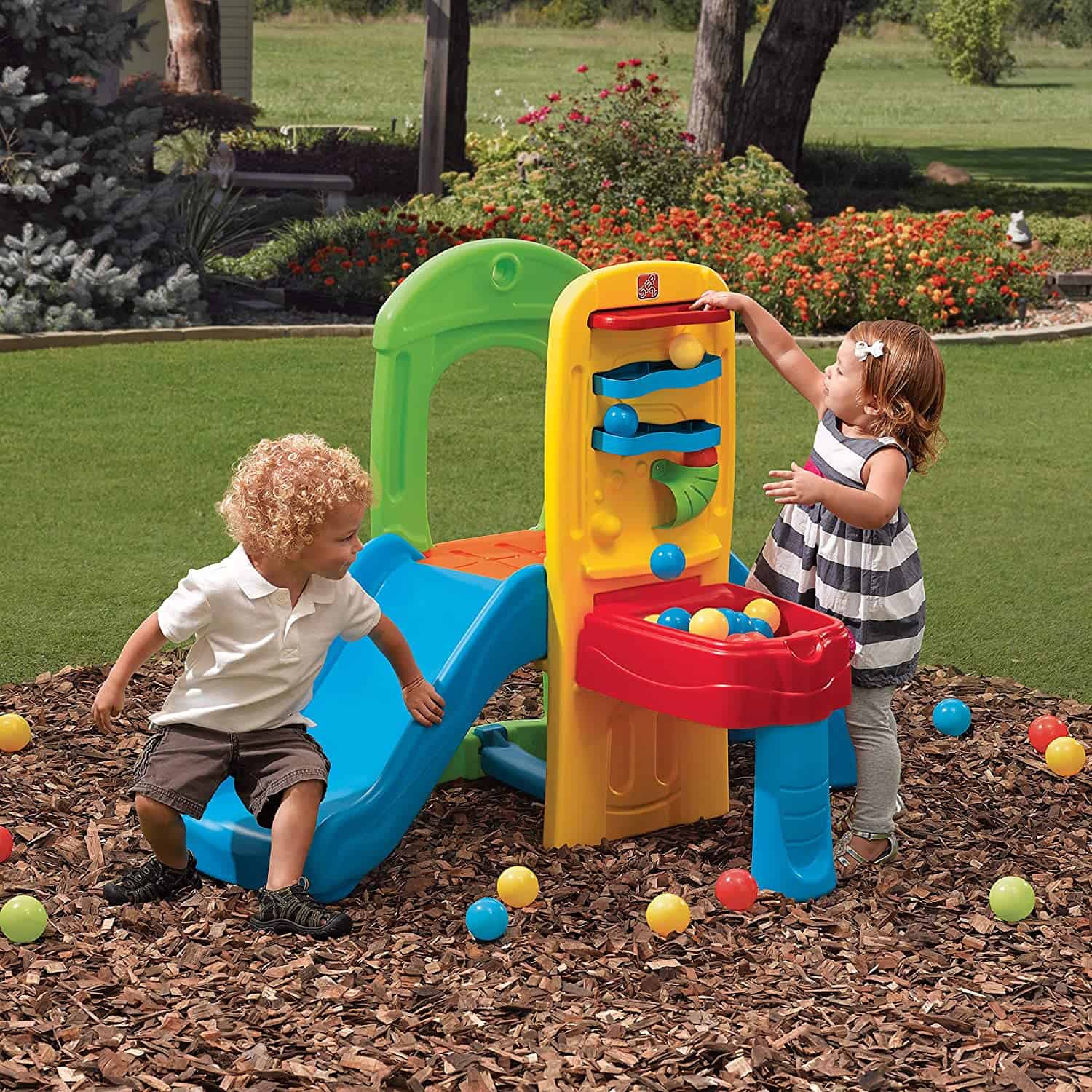
|
| Easiest to store: Little Tikes Giant Slide Evergreen | 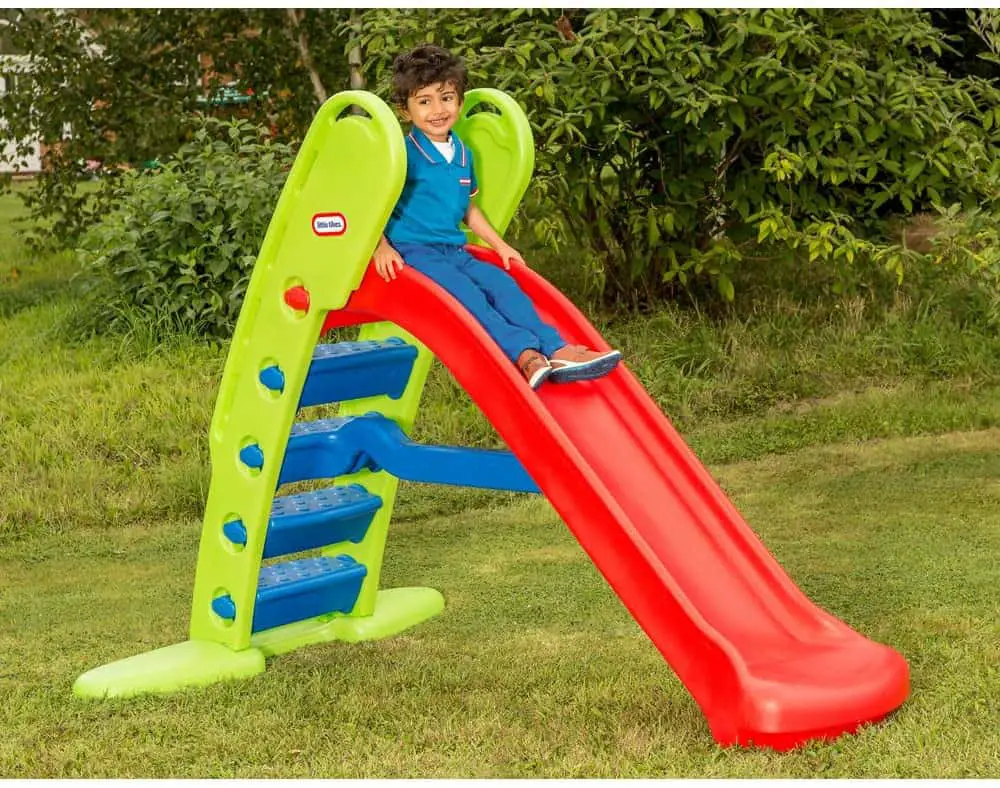
|
| Dear animals slide: AIOEJP Kinbor 3 in 1 slide rocking horse | 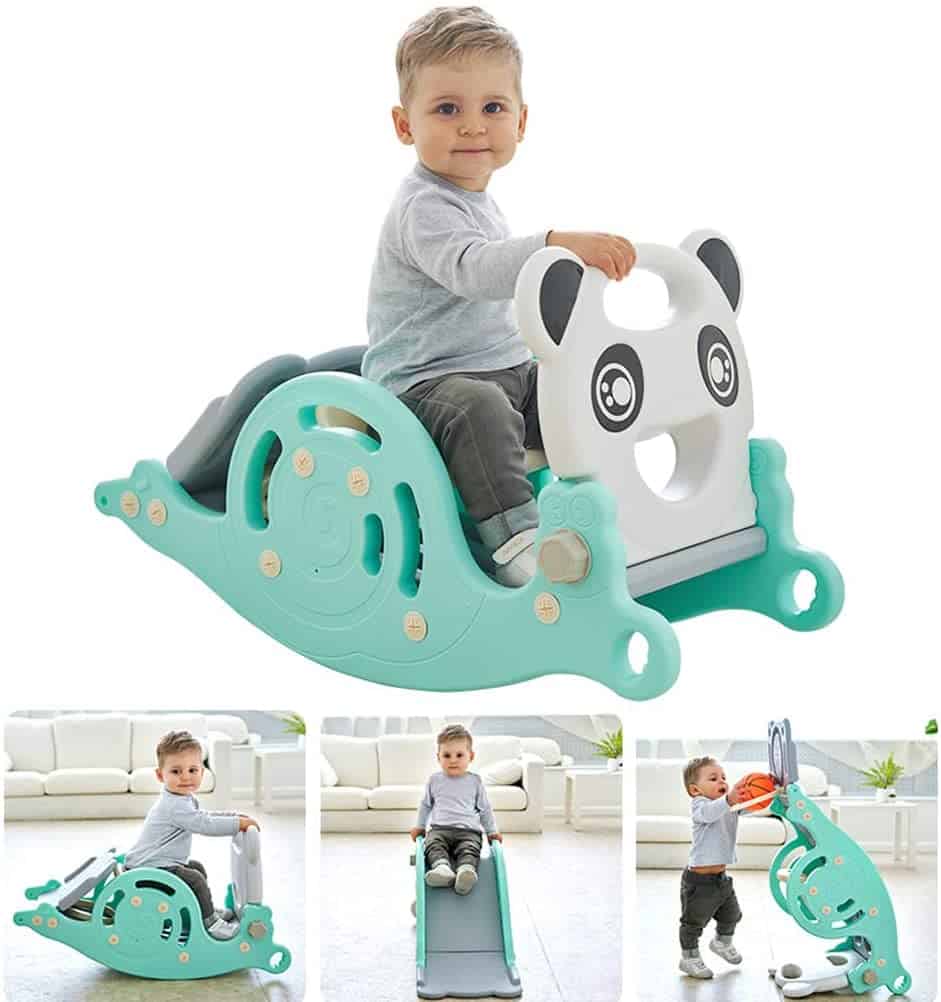
|
| The Best slide swimming pool: Intex Jungle Adventure | 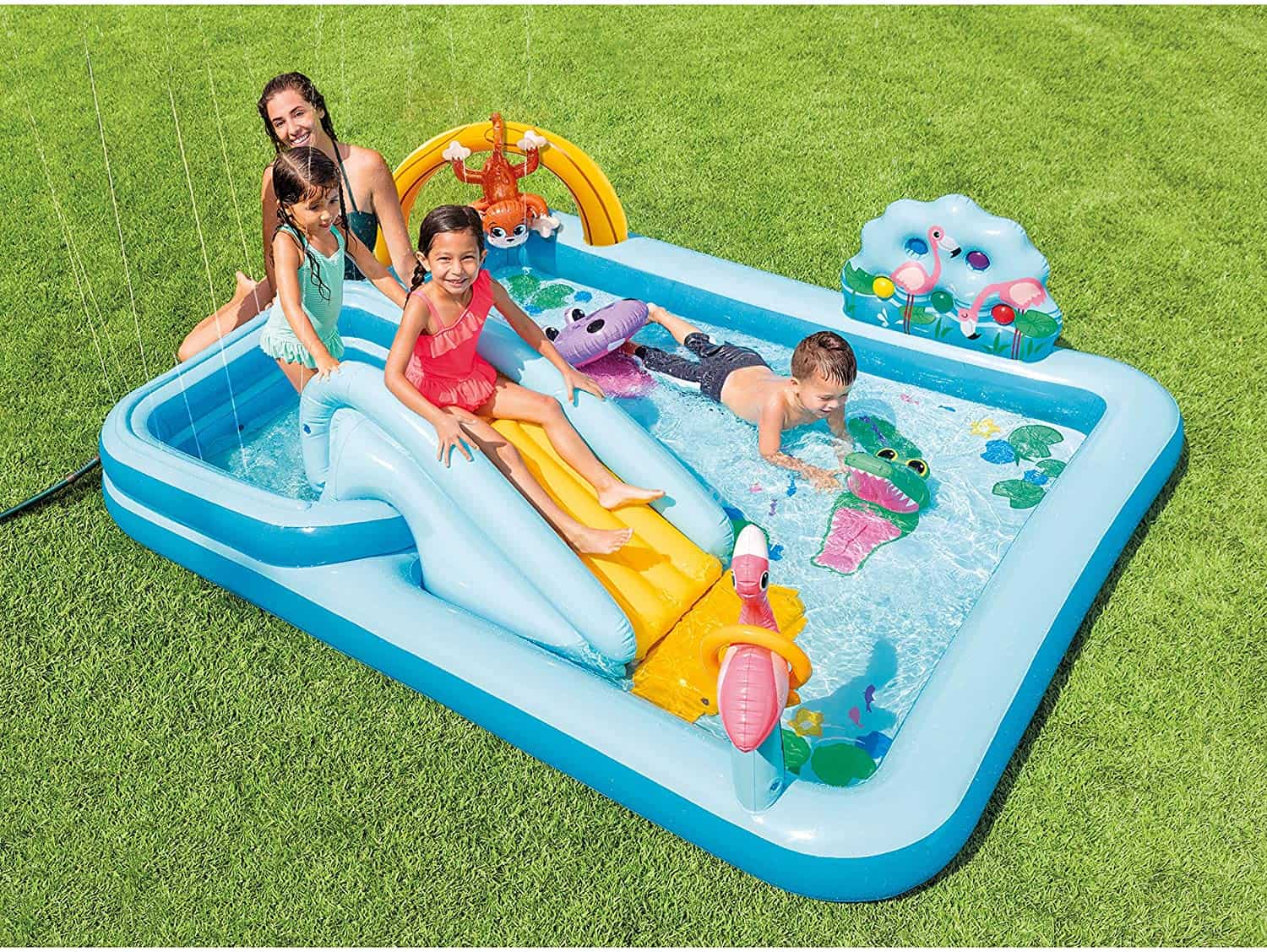
|
| The Best slide made of wood: jupiduu | 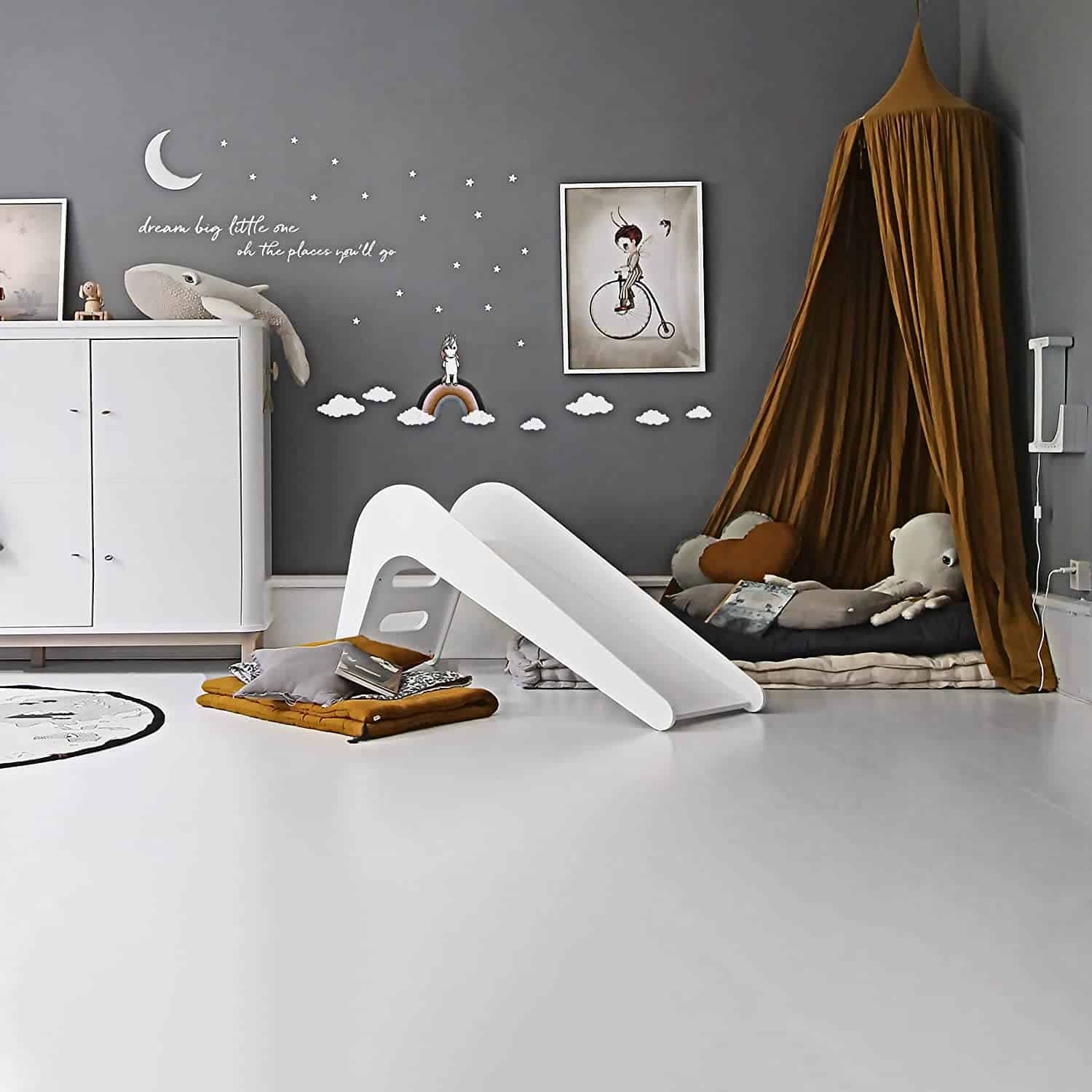
|
| The Best slide bed: Loft bed Bunk Bed | 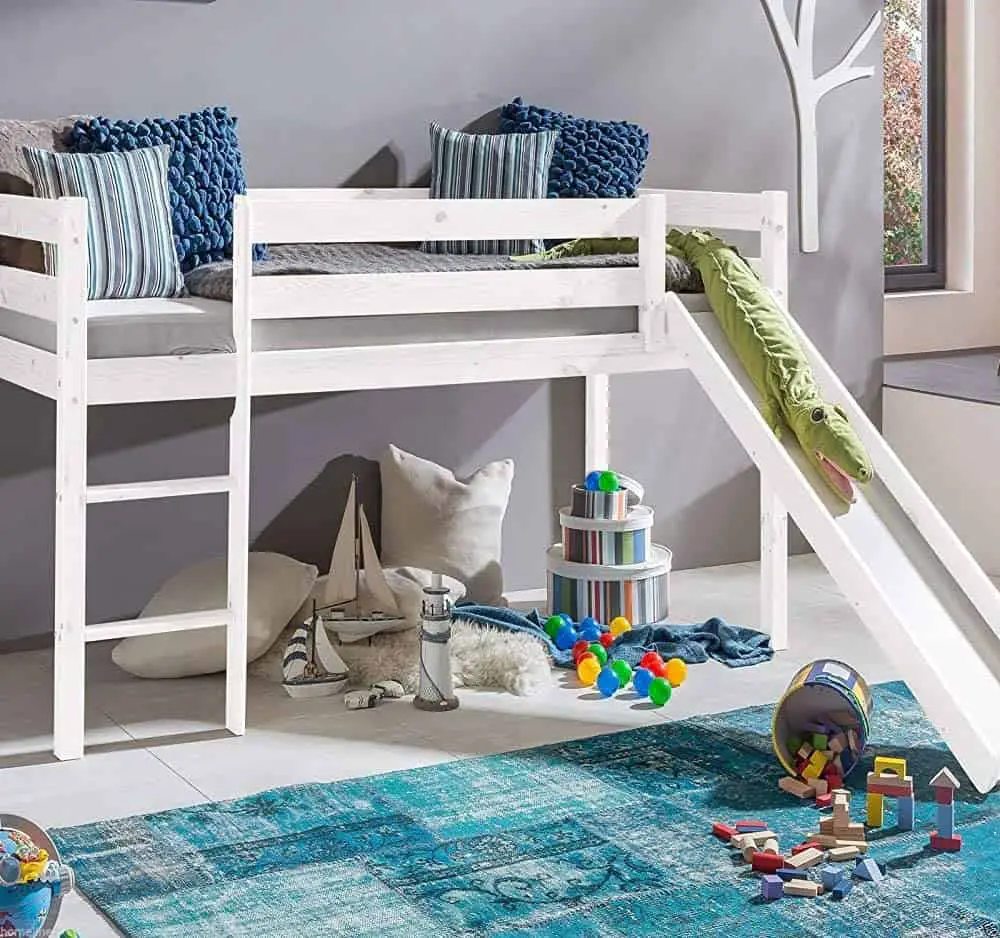
|
| The Best slide from Smoby: Smoby Funny | 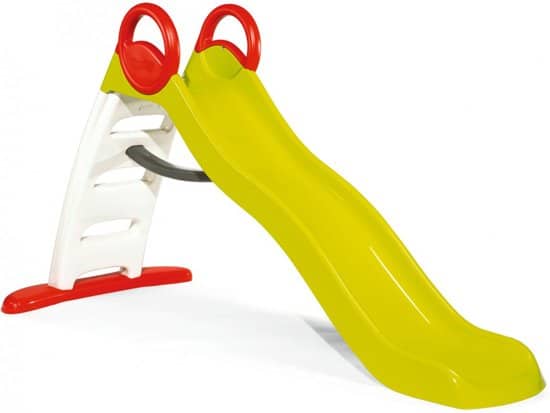
|
| The Best slide with swing: vidaXL swing set | 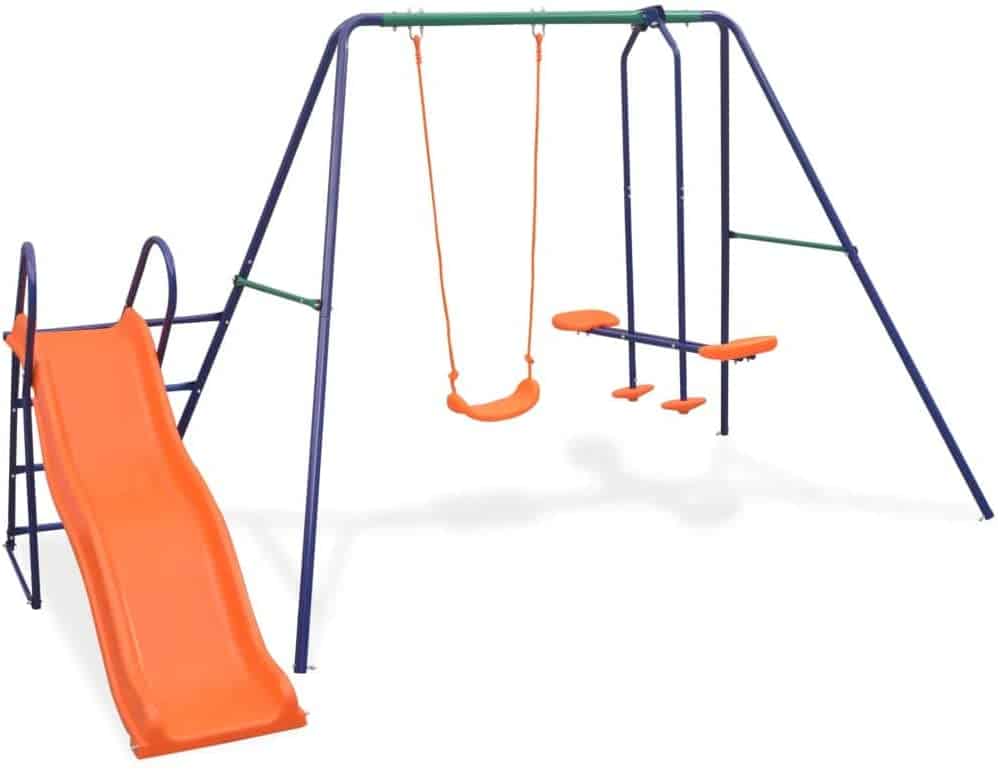
|
| Slide with water connection: Feber Slide Plus | 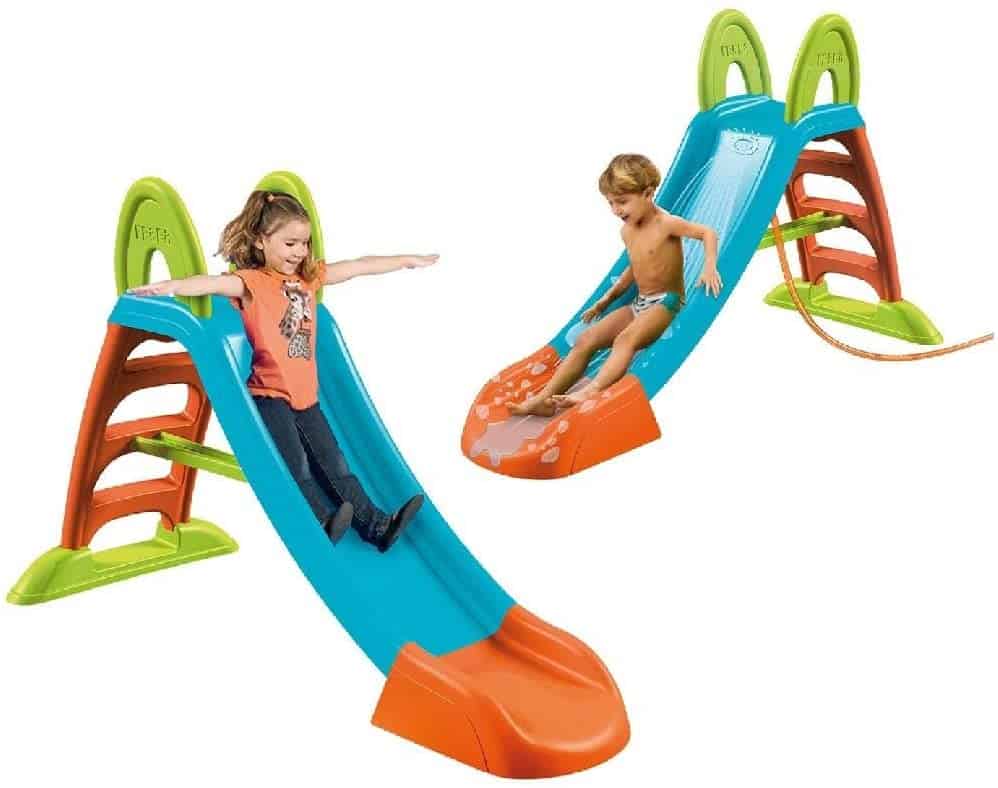
|
| Collapsible plastic slide: Step2 Play & Fold Jr. Slide | 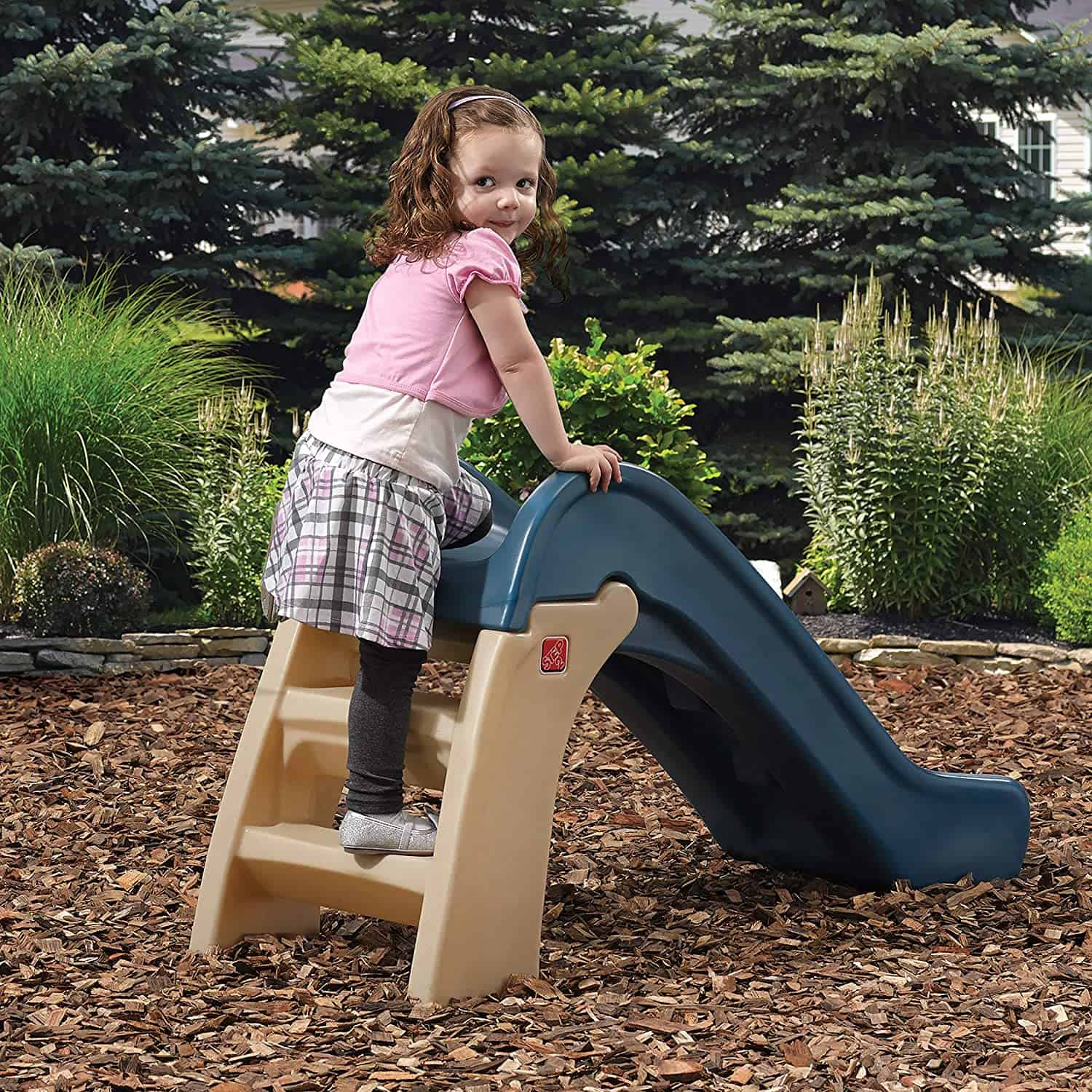
|
| The Best slide for toddler: Step2 Sports-Tastic | 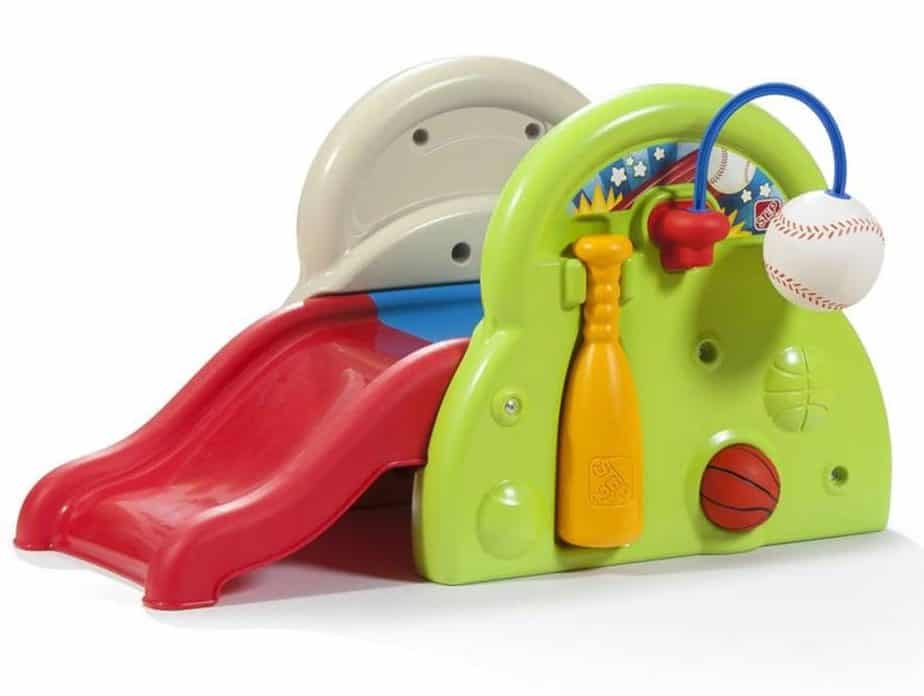
|
| Dear soft slide for babies: ecr4kids soft zone | 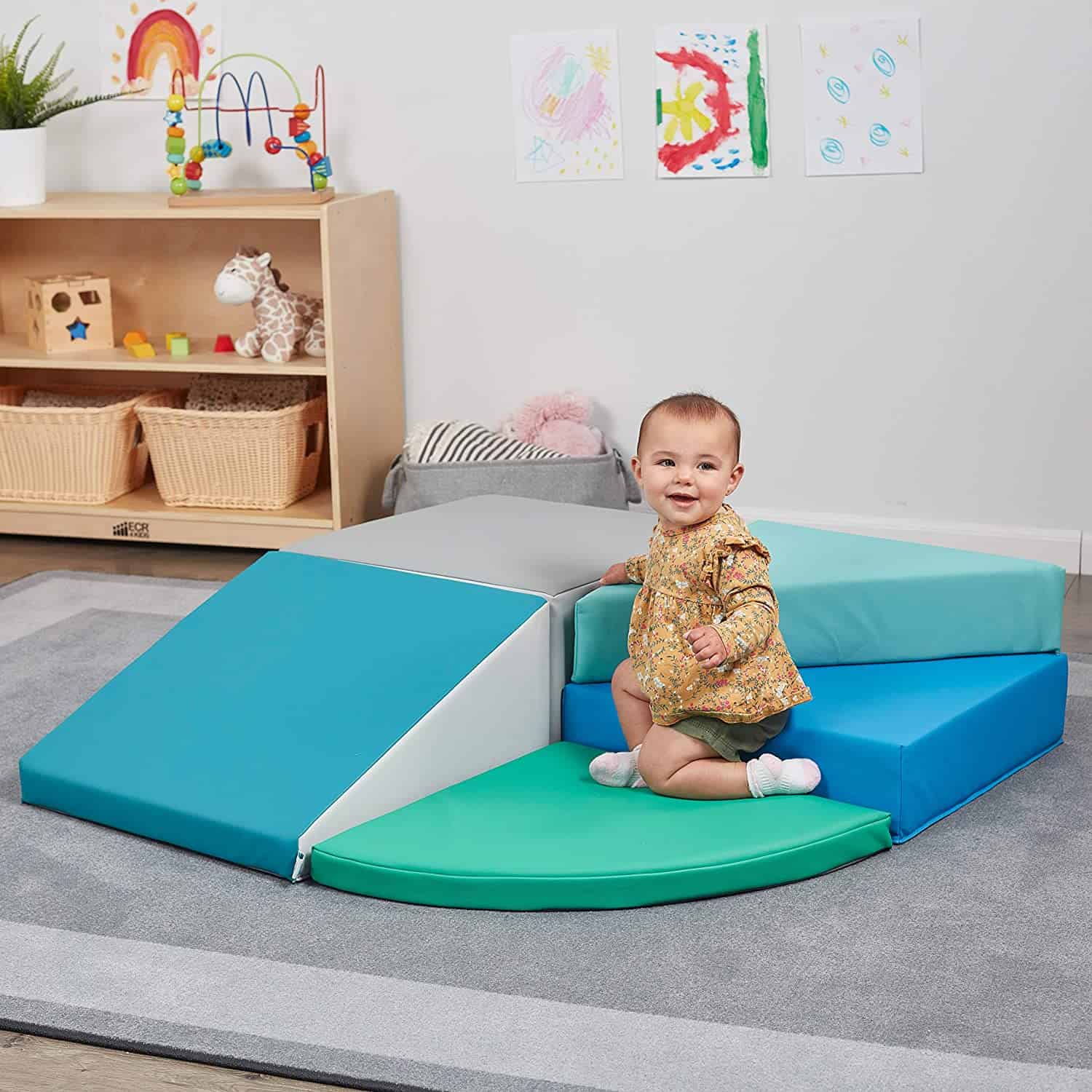
|
| The Best slide with trolley: Step2 Unicorn Up & Down Roller Coaster | 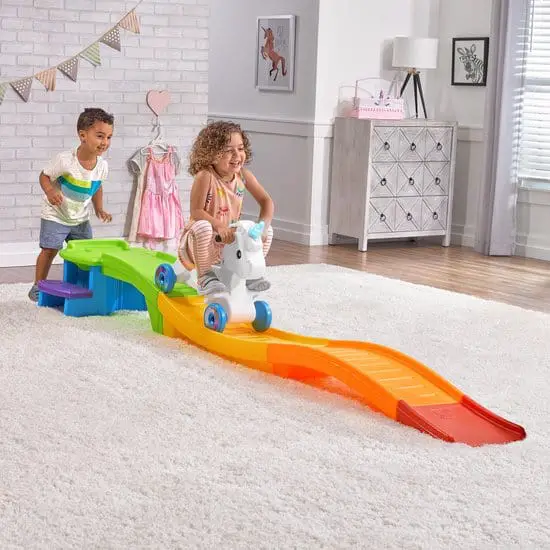
|
You can opt for a loose one slide, or perhaps an entire piece of play equipment with a slide sits with.
bigger slides for the older children, and smaller ones slides for the younger children.
There is always something for everyone.
Play on one slide not only means pure fun, it also contributes to a child's social and motor development.
A child learns to play together with other children, taking turns slide go off.
If you're planning on getting one slide you first want to know what the things are that are involved when buying slides come see.
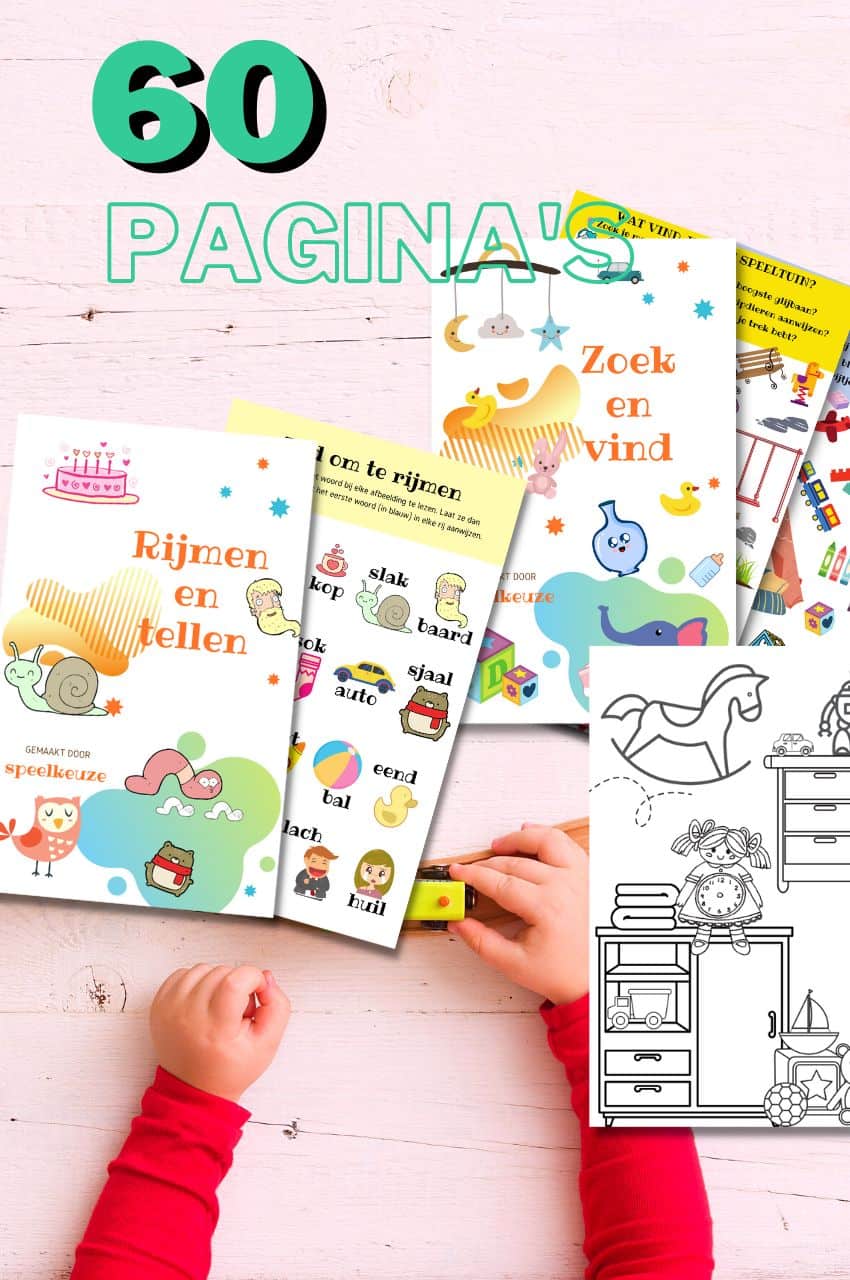
From toddler to toddler activity book collection
Educational games and coloring pages for 3 to 6 years
Your toddler and preschooler will love this e-book, along with the accompanying printables. He or she can play with it at every stage of development, together with mom and dad.
Buy at Bol.comWhat we discuss in this comprehensive post:
- 1 What should you consider when buying a slide?
- 2 Top 16 best slides rated
- 2.1 Best slide for toddler: Step2 Play ball fun climber climbing frame
- 2.2 Easiest to Store: Little Tikes Giant Slide Evergreen
- 2.3 Best animal slide for the garden: AIOEJP Kinbor 3 in 1 slide rocking horse
- 2.4 Best slide pool: Intex Jungle Adventure
- 2.5 Best wood slide: Jupiduu
- 2.6 Best Slide Bed: Loft Bed Bunk Bed
- 2.7 Smoby's Best Slide: Smoby Funny
- 2.8 Best slide with swing: vidaXL swing set
- 2.9 Slide with water connection: Feber Slide Plus
- 2.10 Collapsible plastic slide: Step2 Play & Fold Jr. Slide
- 2.11 Best slide for a toddler: Step2 Sports-Tastic
- 2.12 Best soft slide for babies: ecr4kids soft zone
- 2.13 Best slide with trolley: Step2 Unicorn Up & Down Roller Coaster
- 3 What are fun slide games?
What should you consider when buying a slide?
Motor skills are trained by climbing the ladder, testing balance and coordination, and sliding down.
It is also important for children to have space to relax between school hours play and lose their energyso that they can return to class refreshed and with full focus.
A playset (of slide) is therefore indispensable on a schoolyard.
Slides can be found in sandboxes, in playgrounds on the grass, but also in swimming pools.
So the landing can be in the sand, on the grass or on a soft mat, or even in the water!
There are a number of things to keep in mind when getting one slide buys for in you Outdoor or for indoors.
- Is it suitable for my child's age: a slide, even if you put it safely on soft grass, is one of the playground equipment that children fall off most often. Partly because the goal is of course sliding. Still, you should look for a slide that is age-appropriate as they can hit hard.
- Is it sturdyOn the market there are a lot of models to choose from, and much of it is personal preference. But it is important to check how sturdy the slide is on its legs. Because slipping legs can quickly cause a hard fall.
- Is he challenging enough: This is the other side of the coin when you consider age suitability for your child. Is it challenging enough, because no child will keep going down a slide that is much too low. In addition, you can see if there are other fun accessories or options to play with, like many of our top picks.
- Pricing: with all purchases, whether or not a toy, the price at which it is sold is very important. You want to make sure you get the best out of your money but also don't pay too much for features that your child won't be using. Plus your child won't care what brand his slide is from.
- What material is it made of: finally, you have to look at the material it is made of. Wood is very sturdy, lasts a long time and is a lot more durable and while this would be a good choice in many cases, it is more sensible for small children to look for one made of plastic that will be a lot softer on their heads should things go wrong .
I'll get to it all in a moment slides take a closer look and assess it, but would also like to discuss a number of specific things to pay attention to when indoors slide, or a very large one outside slide:
What should you pay attention to with an indoor slide?
Looking for an indoor slide for your little toddler?
We know that smaller kids usually like to play outside because that's where all the fun is.
The grass, the rain, the snow, their friends and many other things that catch their attention.
As parents or carers, we want them to have all the fun in the world, but usually we can't guide them properly when they play outside, and the weather isn't always nice!
Here's a solution, indoors slides. They are safe, they are easy to store, they don't take up too much space and they bring unlimited fun to children.
But before you click to one of the stores to buy one for your child, there are a few things to keep in mind.
Safety
We all want our children to be able to play, relax, and be alone.
That is why we go out to buy gifts and toys for them that they can also do independently.
But the whole idea is useless if the toys we buy for them can harm them.
So when shopping for slides for toddlers, their safety should be the priority. Especially indoors, it will often be on a hard floor.
Buy one that's not too high for its age, and put a soft rug underneath, for example such a play mat with lining underneath.
Check the strength of the materials from which it is made and the structural integrity of the construct.
Size
Another important factor to consider is the size of the toy you want to buy compared to your child's weight and height.
You need to make sure that the dimensions are compatible and fit your child perfectly. It would ruin the experience if your child breaks the slide due to his weight, or keeps falling.
What should you consider when buying a larger slide?
The playground is one of the most essential elements in or around your home.
Whether in the backyard or somewhere on a playing field if you are lucky, it is very important to create an open space where children can play and have fun.
If you have older children and no playgrounds nearby, it might be time to get a bigger one slide of to buy a playhouse.
Water slides can be perfect for children of all ages. But check out the tips below before you go big slide buys.
How much space is needed for a large one slide?
Children's slides like this one are quite large.
They are designed for children of different ages, so you need to make sure you have enough space before buying them.
Look at the area where the slide will be put down. This would most likely be the backyard.
- How big is it?
- Is it enough to be able to set up the slide?
When determining the space, there are some safety rules when it comes to the distance to be observed.
For example, there must be at least 2,5 meters of open space around the slide .
This leaves enough space for the children to play and to use the equipment safely and effectively.
Are there minimum age requirements for large slides?
When your big slides If you buy one for children, you should also consider the ages of the children who will be using it.
For children under five years old, plastic is used slides with softer corners highly recommended.
It can't be that long, because the slide may therefore not be more than 1 meter 20 in length. Make sure the slope is also flat.
As for children between the ages of five and nine, slides from 2 to 3 meters long are great.
Require large slides a professional installation?
As soon as the slide has been purchased, they must be installed effectively before use.
This is probably something you can do yourself, but if you don't have the time or the know-how it might be best to have a professional install large installations.
Proper installation is crucial for the safety and ease of use of large slides for children to increase.
It must be done very meticulously and be well and firmly attached.
Top 16 best slides rated
In the next section, we'll dive deeper into our favorite ones slides by category. We want to make sure that after reading this article you know exactly which one slide the new addition will be for the kids!
You will also find some more at the end of this article fun games for the slide, so be sure to read on!
Best slide for toddler: Step2 Play ball fun climber climbing frame
The perfect slide In our opinion, the Step2 Play ball is fun climber play equipment for a toddler.
With this slide toddlers are able to develop their motor skills, as well as their sensory and cognitive skills, by playing with the ten colored balls and pushing them through the activity center.

Step2 is the largest American manufacturer of toys for preschoolers and toddlers.
Their mission is to be the leading innovator of children's products that capture the imagination.
This slide is more than just one slide. In addition to playing fun, it offers children various ways to learn and develop.
This is how kids practice their gross motor skills by using the slide, where they have to climb onto the low steps and get off the slide can slide off.
Here are a toddler and a pre-schooler trying it out:
They can also crawl under the playground equipment.
Using the ten colored balls, children develop their sensory and cognitive skills, pushing the balls through the activity center, sorting the balls by color and counting them.
The balls gather in a ball pit (nice to have at home anyway!).
The maximum weight that the device can carry is 19,5 kg per child.
Do your kids love to climb on all kinds of things? One of these carts that I have written about here could be nice too.
It's the perfect way to transport your kids and other gear while they love it too!
Check the latest prices hereEasiest to Store: Little Tikes Giant Slide Evergreen

Little Tikes is a well-known brand in the toy world. Little Tikes makes play equipment that helps children of all ages to grow and play with pleasure.
From cute toys for newborn babies to challenging toys for toddlers and preschoolers; Little Tikes has great toys for every child!
Little Tikes produces the most fun and best play opportunities for children. This slide from Little Tikes is available in green and yellow and has a 180 cm long sliding surface.
Our favorite slide from this brand is the Little Tikes Giant Slide Evergreen.
Safety has of course also been taken into account: high sides, wide steps and sturdy handles. The slide is suitable for children from 3 years.
This exciting, big one slide is equipped with a 180 cm long sliding surface. The sides have been made a little higher so that you can always play safely.
The stairs leading to the top of the slide is equipped with handles and wide steps. This way, a child will always be stable and climb up.
It is useful that the slide can be folded and stored in no time. The slide is available in the colors yellow and green and is suitable for children aged 3 years and over.
The weight what the slide can carry is 18 kg.
Check prices and availability hereBest animal slide for the garden: AIOEJP Kinbor 3 in 1 slide rocking horse
This is a great example of one slide for outside (in the Outdoor) or inside. The slide is designed in the shape of a bear and is equipped with a system to transform it into rocking horse (bear) to slide.
This one has a low sliding surface slide suitable for children aged from 18 months.

Although most slides are intended for use in the Outdoor, are there also slides that are made for indoors or for indoors and outdoors.
This slide has the design of a bear and has a 3-position option for extra fun.
A slide which is guaranteed to appeal to all kids!
Check availability hereIf they enjoy playing in the Outdoor keep, then one of these trampolines also super fun! It's an investment but you Outdoor becomes a real play paradise!
Best slide pool: Intex Jungle Adventure
For a real thrill, try this inflatable water park with... slide and purchase a swimming pool from Intex, the Jungle Adventure.
This is what you call real water fun! An inflatable swimming palace with permanent pump, slide, animals, and swimming pool.
you get one water hose (here more water hose toys) and everything needed to build this bath. The swimming palace is suitable for children between 3 and 6 years old.

This is the perfect inflatable water park for all garden parties!
Check prices and availability hereBest wood slide: Jupiduu
A beautiful, wooden one slide for indoors. The slide is safe due to the rounded corners and high sides, and is not only fun for the kids, but also a beautiful and stylish item for the home.
The slide is designed for children from 1 to approximately 4 years.

Looking for a wooden one slide? In this category we prefer the Jupiduu wooden one slide.
At Jupiduu they design toys that are great fun for children, and that also look beautiful.
This slide can be placed indoors, so children can play on this beautiful one all day long slide.
In addition to the color white, you can find the slide also available in the colors blue, yellow, green and pink.
The slide is safe because all corners are rounded. The high sides make it possible to hold on when you fall from the slide goes off.
Besides being a fun toy, this one slide also a beautiful, playful detail for your home. The recommended age is from 1 to approximately 4 years.
Best Slide Bed: Loft Bed Bunk Bed
A bed that makes it possible to literally slide out of bed! This mid-high bed with slide is made of sturdy wood and easy to assemble.
You climb into bed via the stairs and slide down the stairs slide out of bed. The best way to wake up!

What could be more fun than waking up and literally sliding out of bed? This one loft bed makes that possible!
The bed with stairs and slide is suitable for both boys and girls and is easy to assemble.
It is recommended to wipe the bed every now and then with a damp cloth. You finish the bed with a comfortable mattress and a nice duvet cover, appropriate to the preferences of your child.
Check the latest prices hereSmoby's Best Slide: Smoby Funny
Smoby is a quality brand that produces colorful toys for children. Smoby kids grow up playing and creating their own stories.
They develop their imagination thanks to the quality toys.
Our favorite slide from this brand is the Smoby Funny Slide.

Smoby is a brand that produces colorful toys for children. This slide from Smoby has a water feature and a wavy surface.
The slide is robust and stable, equipped with handles and treated with an Anti-UV layer. The slide is easy to assemble and suitable for children from approximately 2 to 4 years.
Just like the Paradiso Toys slide XXL Elephant is this one slide also equipped with a water function.
The slide has cheerful colors and is stable in construction. The undulating sliding surface provides this slide just a slightly more exciting and challenging effect than straight slides.
At the top of the slide There is a wide surface and there are handles on both sides so that a child can play easily and safely.
The slide is suitable for outdoor use and has an Anti-UV layer so that the color will not fade quickly and the slide stays strong. Putting it together is also very easy. The slide is suitable for children from approximately 2 to 4 years.
Check prices and availability hereBest slide with swing: vidaXL swing set
A beautiful playground equipment with two swings and a slide.
The device is made of metal and will last a long time due to its robust structure. Ideal for families with two children, for example.

For an outdoor play set with slide and swing, we recommend the VidaXL playground equipment.
VidaXL is an online department store that has everything for home and... Outdoor. The playground equipment is durable and consists of a beautiful blue slide, a swing in the same blue color and a small playhouse.
While one child of the slide slides, the other plays with the swing. Ideal for families with two children, or for a family with only one child who likes to invite friends to hang out together. Outdoor to play.
Check prices and availability hereSlide with water connection: Feber Slide Plus
This slide provides lots of water fun! This beautiful, robust slide has a water connection so that water can be supplied to the slide is sprayed.
The slide assembles easily and quickly and can be folded for storage. The slide is suitable for children from 2 years.

The perfect slide for the summer is the Feber Junior Slide with water.
Feber is a toy brand known for its unique, safe toys and has already won several awards. Feber produces beautiful toys at a fair price.
This sturdy slide is equipped with a connection for a water hose. The water is placed on the grill through a grid slide sprayed. The slide is provided with cheerful colors and provides an afternoon of water fun in the Outdoor.
The slide is suitable for children from 2 years old, resistant to sunlight and can be assembled without tools. Moreover, the slide can also be folded and stored again in no time.
Check prices and availability hereCollapsible plastic slide: Step2 Play & Fold Jr. Slide

Do you find it especially useful that you can store the slide neatly and conveniently after playing? Then the Step2 Play & Fold might be the right slide. This is our favorite plastic slide too.
The slide is suitable for children from 18 months and the maximum weight is 19,5 kg. The slide is easy and quick to fold after use.
Other slides with a folding function are possibly the Feber Junior Slide with water and the Little Tikes Slide Groot Oranje.
Sturdy slide made of blue-brown plastic suitable for small children. The slide is low to the ground and has only two steps, so there is less risk of falling.
Due to the robust material, this slide can be placed outside, the smooth plastic ensures that the children slide down without chafing.
Check prices and availability hereBest slide for a toddler: Step2 Sports-Tastic
For the smaller children, this is a great slide that offers multiple play options.
Besides sliding down the slide you can play basketball, football and baseball with the help of the accessories. The slide is suitable for small children from 1 year of age.

For the little ones there is the Step2 Sports-Tastic slide.
A fantastic slide with extra play options. The device introduces children to the sports of basketball, football and baseball.
The accessories are clipped to the sides of the slide. The slide with additional play options is suitable for children from the age of 1 and can be used both indoors and outdoors.
View the most current prices hereBest soft slide for babies: ecr4kids soft zone

If you still find the above slides for slightly older children and you have a baby or young toddler who you also want to slide nicely, then the soft zone is a set for you.
There are many different sets available in different colors and with different shapes, so you can also combine different sets with each other.
View different variants hereBest slide with trolley: Step2 Unicorn Up & Down Roller Coaster

It can be even more spectacular than with some of the other sets, namely with a real roller coaster with cart.
Well, a little roller coaster for toddlers then. And one with a unicorn (more unicorn toys here) cart to ride on.
As you can see from this list, Step2 is an incredibly fun brand for this kind of plastic play equipment, and this Up & Down Roller Coaster is a great twist on a traditional toy.
View this set hereWhat are fun slide games?
For the older children you can make playing on a slide even more fun with the help of a little creativity.
Slide soap suds extension
For example, you could 'extend' the slide in the summer with a long mat that you sprinkle with soap. So you slide onto the mat and you will slide meters far.
This is especially useful in the case of the slides with water function, but can also be played with the slides without this function. You could turn it into a competition; the child who slides furthest has won!
Slide in a children's pool
You can also put the slide in a children's pool, for example, so that the kids end up in the water after sliding. It goes without saying to us that supervision should always be carried out to ensure the safety of the children playing.
Sliding down the slide creatively
You can also descend the slide in various ways: sitting on the buttocks, lying on the back (forwards or backwards), or the stomach (forwards or backwards).
For the smaller children it is advised to simply let them slide while sitting. For the older children who can play autonomously, these kinds of things can be fun ways to play with a slide.
Looking for more toys for the Outdoor? Here we have the top 10 best outdoor toys listed for you.

Always something to do for the holidays or rainy day?
Play Choice now has the ultimate activity book collection, with over 60 pages of fun coloring pages and educational puzzles.
Joost Nusselder, the founder of Speelkeuze.nl is a content marketer, father and loves trying out new toys. As a child he came into contact with everything related to games when his mother started the Tinnen Soldaat in Ede. Now he and his team create helpful blog articles to help loyal readers with fun play ideas.